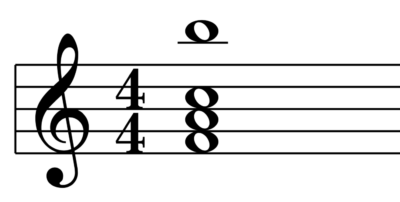Illustration: Nhung Lê
The Lydian mode is one of the seven common diatonic modes.
Known as the ‘brightest’ of these modes, the Lydian mode can be used in an incredibly wide array of musical contexts. In this article, let’s discuss what exactly the Lydian mode is, some popular compositions that make use of it, and how to apply it to your own music.
Feel free to use the table of contents below to quickly navigate to a specific section.
What you’ll learn:
- What is the Lydian mode?
- Lydian mode intervals
- The Lydian scale in all “keys”
- Songs that use the Lydian mode
- How to use the Lydian mode in your songs
Let’s get started!
What is the Lydian mode?
The Lydian mode is a mode that’s in many ways similar to major, but features a raised fourth (♯ˆ4) as its distinguishing feature. If we started on F, then its ascending scale would consist of F, G, A, B, C, D, E, and F.

The F Lydian scale
What’s the difference between the Lydian and Mixolydian scales?
Out of the seven common modes, Lydian is the only one that raises notes when compared against the major scale, which earns it its title as the brightest mode. For example, while the Mixolydian mode is also a ‘major mode,’ it’s distinguished from the major scale by its flattened fifth (♭ˆ5).
The history of the Lydian mode
The Lydian mode gets its name from the ancient kingdom of Lydia in Anatolia, where it was believed to have originated. In ancient Greece, the mode was primarily used in hymns and instrumental music, while it was adopted by the church in the Middle Ages and later employed by the likes of Beethoven and Charles-Valentin Alkan in the Romantic era.
Today, the Lydian mode is used to create melodic and harmonic interest in an expansive range of genres spanning jazz to progressive rock. It’s also commonly featured in film and video game soundtracks to achieve feelings of wonder and energy.
Access the world’s best sample library and connected creator tools for only $0.99.
Lydian mode intervals
As you can decipher from the previous example, the Lydian mode consists of the following intervals:
- Root
- Major second
- Major third
- Augmented fourth
- Perfect fifth
- Major sixth
- Major seventh
If you were to sequence an ascending scale, the intervals could be expressed in shorthand as WWWHWWH (‘whole whole whole half, whole whole half’).
Applying this formula, here would be the notes for a C Lydian scale:
- C
- D
- E
- F♯
- G
- A
- B
- C

Let’s do one more example for good measure—the A Lydian scale would consist of the following:
- A
- B
- C♯
- D♯
- E
- F♯
- G♯
- A

Once you familiarize yourself with the pattern, you can apply it to construct a Lydian scale off of any other root note. If you’re a guitarist, you can refer to the following tablature for a transposable scale:

Guitar tabs for the A Lydian scale
The Lydian scale in all “keys”
While familiarizing yourself with the sequence of intervals is far more valuable (and easier) than memorizing every scale one-by-one, here’s a table outlining the Lydian scale associated with every root note for easy reference:
| Root | Notes in the Lydian scale |
| C | C – D – E – F♯ – G – A – B – C |
| C♯ | C♯ – D♯ – E♯ – F♯♯ – G♯ – A♯ – B♯ – C♯ |
| D♭ | D♭ – E♭ – F – G – A♭ – B♭ – C – D♭ |
| D | D – E – F♯ – G♯ – A – B – C♯ – D |
| D♯ | D♯ – E♯ – F♯♯ – G♯ – A♯ – B♯ – C♯♯ – D♯ |
| E♭ | E♭ – F – G – A – B♭ – C – D – E♭ |
| E | E – F♯ – G♯ – A♯ – B – C♯ – D♯ – E |
| F | F – G – A – B – C – D – E – F |
| F♯ | F♯ – G♯ – A♯ – B♯ – C♯ – D♯ – E♯ – F♯ |
| G♭ | G♭ – A♭ – B♭ – C – D♭ – E♭ – F – G♭ |
| G | G – A – B – C♯ – D – E – F♯ – G |
| G♯ | G♯ – A♯ – B♯ – C♯♯ – D♯ – E♯ – F♯♯ – G♯ |
| A♭ | A♭ – B♭ – C – D – E♭ – F – G – A♭ |
| A | A – B – C♯ – D♯ – E – F♯ – G♯ – A |
| A♯ | A♯ – B♯ – C♯♯ – D♯♯ – E♯ – F♯♯ – G♯♯ – A♯ |
| B♭ | B♭ – C – D – E – F – G – A – B♭ |
| B | B – C♯ – D♯ – E♯ – F♯ – G♯ – A♯ – B |
We use the term “key” loosely to refer to these because modes don’t follow the same functional behaviors of traditional major and minor keys, which are a requisite of the term in its strictest definition. Also note that several of these are enharmonically equivalent—for example, the modes built off of C♯ and D♭ share all of the same pitches, but are simply expressed differently in writing.
Songs that use the Lydian mode
While scales are a necessary starting point, they don’t paint a complete picture of the sound of the Lydian mode by themselves. Let’s begin to familiarize ourselves with the mode by listening to a few pieces of music from varying genres and generations that feature it.
1. “Flying in a Blue Dream” by Joe Satriani (1989)
Take a listen to the opening chords in Joe Satriani’s “Flying in a Blue Dream.” Here, the indescribably floaty feeling is made possible due to the augmented fourth, which is the defining note of the Lydian mode. Satriani also repeatedly incorporates the note in his lead guitar licks that enter shortly after, effortlessly evoking the feeling of flying in a dream.
2. “Giant Steps” by John Coltrane (1960)
In his signature tune “Giant Steps,” John Coltrane traverses through a succession of the C Lydian, A♭ Lydian, and E Lydian scales. While the entire composition isn’t centered around the Lydian mode like Satriani’s piece, Coltrane draws on the raised fourth’s unique color in sporadic bursts to grab the listener’s ear—which is very much in line with how modes are often applied in jazz.
3. “Zelda’s Lullaby” by Koji Kondo (1991)
The music from the legendary video game series The Legend of Zelda is ripe with the use of various modes. In “Zelda’s Lullaby,” we hear the Lydian mode in the second chord of the opening progression, which is continued underneath the main melody. Here, the mode helps establish a delicate and ethereal—yet somehow simultaneously larger-than-life—feel, making the lullaby feel as though it has existed as long as time itself.
How to use the Lydian mode in your songs
As heard in the examples above, there’s truly no single ‘right’ way to use the Lydian mode. Depending on your arrangement, harmonies, and an infinite range of other factors, the mode can sound anything from chaotic to nostalgic.
With that said, below we’ve highlighted a few ideas that you can experiment with to develop your own unique applications and associations.
1. Use the Lydian mode as the harmonic foundation of your music
If you’re always gravitating towards major and natural minor by default and want to try building a song entirely around a new palette, the Lydian mode can be just the right thing for you. Though it only has one note that separates it, the augmented fourth alone introduces enough new color to generate a wealth of new ideas.
If you’re not sure where to start, simply adding the augmented fourth over a major chord will instantly create a Lydian sound. You can also try tucking it into a more closed chord voicing to get a sound akin to Satriani’s “Flying in a Blue Dream.”

The augmented fourth over a major triad
2. Use the Lydian mode as a passing color
There’s also no need to use the Lydian mode (or any other mode) as the sole harmonic backbone of your composition. In fact, many pieces will simply borrow its color in a single section, but then ‘resolve’ into a different key.
Take “Lost Woods,” another iconic track from Zelda, for example. The piece is often referenced as a go-to example for the Lydian mode, as it starts off with a figure that immediately emphasizes the augmented fourth.
However, the second half of the passage quickly reveals that the piece actually feels more grounded in C major—Kondo simply draws on the augmented fourth to achieve an enigmatic color that effectively evokes the feeling of being lost.

The opening melody in “Lost Woods”
You can apply this idea in your own music by treating the Lydian mode as more of a borrowed color—use it to create a moment of intrigue, and then revert to major, minor, or perhaps even a different mode.
3. Use the Lydian mode as inspiration for improvisation
Lastly, if you’re an instrumentalist, experimenting with modes can be a great way to expand your horizons for soloing and improvisation. Try playing phrases using the Lydian mode over a backing track, and hear how it sounds. What happens when you use the raised fourth as a quick passing tone? Is there a feeling of tension or release when you emphasize it more prominently? The Lydian mode can be a great way to add some unexpected but controlled character to your music.
Conclusion
While there’s no one way to use it, the Lydian mode provides a distinctive color that’s a great addition to any composer’s toolkit. Hopefully this article gave you a foundation for how it’s structured, and provided you with some initial ideas for using it that you can apply to create your own unique musical settings.
Do you have any questions around using modes in your music? What topics in music theory would you like to see us cover next? Start a conversation with us and other music creators via the Splice Discord.
Continue your exploration of modes in music:
April 7, 2023

.svg)
.svg)




